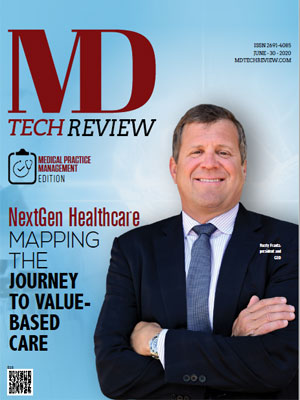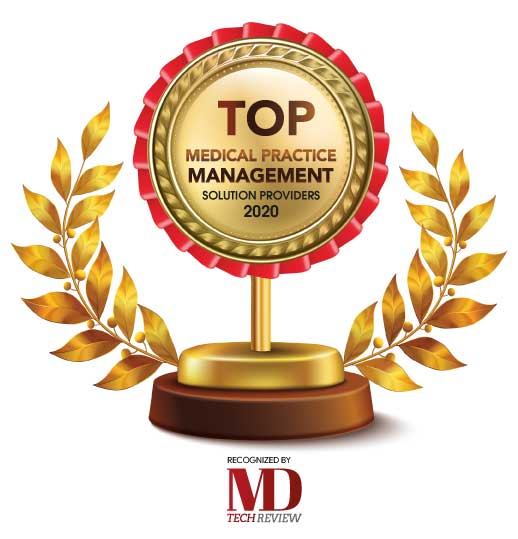Be first to read the latest tech news, Industry Leader's Insights, and CIO interviews of medium and large enterprises exclusively from MD Tech Review
How Effective Clinical Communication Positively Impacts Patient Satisfaction
 Christopher Gonzalez, Marketing Manager,OnPage Corporation
Christopher Gonzalez, Marketing Manager,OnPage CorporationFacilities that modernize the clinical communication process can greatly improve the patient experience. When patients are satisfied, it is more likely that they would speak highly of a facility and the quality of care it provides. In this post, we will examine how organizations can use effective clinical communication systems to achieve ultimate patient satisfaction.
Repercussions of Ineffective Clinical Communication
Ineffective care team communication creates delays in healthcare delivery and patient treatment. Legacy healthcare technology and complex communication workflows only exacerbate the problem in patient life-and-death situations.
Facilities must assess the communication tools they use and determine the systems that can be discarded or replaced. For instance, organizations can replace their insecure, legacy paging hardware with a HIPAA-secure mobile paging service. Pagers do not support two-way communications and prevent clinicians from receiving contextual, real-time insights into urgent patient situations. Hospitals that continue to rely on pagers hinder care delivery and damage their reputation among communities.
At its core, ineffective clinical communication can result in:
● Slow patient care delivery
● Increasing the patient’s average length of stay (ALOS) in hospitals
● Complications from procedures
● Low patient recovery rates
● High patient fatality rates
● Constant patient readmissions
● Tarnished hospital reputation and standing
● Medication errors
Impact of the COVID-19 Pandemic on Clinical Communication
The coronavirus (COVID-19) pandemic has impacted the way that clinicians communicate and collaborate with each other. Clinicians were dispersed for remote work while others remained on the frontlines in the fight against COVID-19. The displacement of healthcare workers has created further challenges in clinical collaboration.
Worse yet, some care teams relied on pagers to communicate with colleagues during the pandemic. Clinicians frequently missed critical pages and were unable to address patient issues promptly. Pagers only complicated clinician-to-clinician communications and care delivery workflows. Repercussions of not providing timely care has led to further hospitalizations and excess fatalities for COVID-19 patients.
The pandemic reaffirmed the importance of digitizing care team communications for large-scale incidents. By modernizing the way teams communicate, healthcare workers can gain a greater degree of situational awareness to deliver effective, patient-centric care during the pandemic.
Investing in Better Patient Care
Organizations can start investing in better patient care by adopting the most robust clinical communication and collaboration (CC&C) software. CC&C systems automate the paging process through on-call schedules, alert escalations and HIPAA-compliant smartphone messaging. The platforms ensure that clinicians receive immediate, persistent alerts and messages to provide patient care promptly. By accelerating care delivery, organizations can achieve ultimate patient satisfaction when it matters the most.
Facilities can gain valuable insights into their quality of care through the Hospital Consumer Assessment of Healthcare Providers and Systems (HCAHPS) survey. According to the Centers for Medicare & Medicaid Services (CMS), “The HCAHPS … survey is the first national, standardized, publicly reported survey of patients' perspectives of hospital care.” HCAHPS scores assess how an organization delivers care and helps it identify workflow inefficiencies that must be improved.
Defining Effective Clinical Communication
Effective clinical communication is defined by the systems that practitioners use to deliver better, faster patient care. As previously mentioned, effective clinical communication can be achieved by investing in CC&C services. When time is of the essence, CC&C platforms solidify care team accountability, collaboration, transparency and responsiveness.
A care team collaboration solution securely consolidates information flow from fragmented health systems, making information easily accessible to clinicians wherever they are. The solution further allows care teams to communicate with each other effectively.
CC&C platforms also facilitate access to healthcare in rural and remote regions, where access to clinical specialists can be challenging. With the help of a dedicated phone number, nurses and caretakers can directly connect with on-call senior physicians over a live call consultation.
Introducing CC&C Systems to Skeptical Users
Though CC&C software greatly improves communication, some practitioners will continue to resist technological change and oppose alterations made to clinical workflows. Attempts to challenge existing communication workflows are difficult and require dedicated leadership if the workflows are to change. Healthcare administrators can motivate clinicians to adopt new communication technology by:
● Defining the benefits and value of modern systems
● Establishing easy and effective onboarding processes
● Choosing the most user-friendly, intuitive software with the right functionalities
● Providing organizational incentives and rewards
Key Takeaways
Healthcare organizations must invest in effective clinical communication systems to accelerate treatment and achieve maximum patient satisfaction. By modernizing care team communications, facilities can meet the needs of patients and overcome the challenges posed by the COVID-19 pandemic or other unforeseen, large-scale events.
Contributed by OnPage Corporation
OnPage provides a HIPAA-compliant clinical communication solution for care teams and delivers the industry’s only ALERT-UNTIL-READ notification capabilities, ensuring that critical pages are never missed.
The pandemic reaffirmed the importance of digitizing care team communications for large-scale incidents. By modernizing the way teams communicate, healthcare workers can gain a greater degree of situational awareness to deliver effective, patient-centric care during the pandemic.
Investing in Better Patient Care
Organizations can start investing in better patient care by adopting the most robust clinical communication and collaboration (CC&C) software. CC&C systems automate the paging process through on-call schedules, alert escalations and HIPAA-compliant smartphone messaging. The platforms ensure that clinicians receive immediate, persistent alerts and messages to provide patient care promptly. By accelerating care delivery, organizations can achieve ultimate patient satisfaction when it matters the most.
Facilities can gain valuable insights into their quality of care through the Hospital Consumer Assessment of Healthcare Providers and Systems (HCAHPS) survey. According to the Centers for Medicare & Medicaid Services (CMS), “The HCAHPS … survey is the first national, standardized, publicly reported survey of patients' perspectives of hospital care.” HCAHPS scores assess how an organization delivers care and helps it identify workflow inefficiencies that must be improved.
Defining Effective Clinical Communication
Effective clinical communication is defined by the systems that practitioners use to deliver better, faster patient care. As previously mentioned, effective clinical communication can be achieved by investing in CC&C services. When time is of the essence, CC&C platforms solidify care team accountability, collaboration, transparency and responsiveness.
A care team collaboration solution securely consolidates information flow from fragmented health systems, making information easily accessible to clinicians wherever they are. The solution further allows care teams to communicate with each other effectively.
CC&C platforms also facilitate access to healthcare in rural and remote regions, where access to clinical specialists can be challenging. With the help of a dedicated phone number, nurses and caretakers can directly connect with on-call senior physicians over a live call consultation.
Introducing CC&C Systems to Skeptical Users
Though CC&C software greatly improves communication, some practitioners will continue to resist technological change and oppose alterations made to clinical workflows. Attempts to challenge existing communication workflows are difficult and require dedicated leadership if the workflows are to change. Healthcare administrators can motivate clinicians to adopt new communication technology by:
● Defining the benefits and value of modern systems
● Establishing easy and effective onboarding processes
● Choosing the most user-friendly, intuitive software with the right functionalities
● Providing organizational incentives and rewards
Key Takeaways
Healthcare organizations must invest in effective clinical communication systems to accelerate treatment and achieve maximum patient satisfaction. By modernizing care team communications, facilities can meet the needs of patients and overcome the challenges posed by the COVID-19 pandemic or other unforeseen, large-scale events.
Contributed by OnPage Corporation
OnPage provides a HIPAA-compliant clinical communication solution for care teams and delivers the industry’s only ALERT-UNTIL-READ notification capabilities, ensuring that critical pages are never missed.



